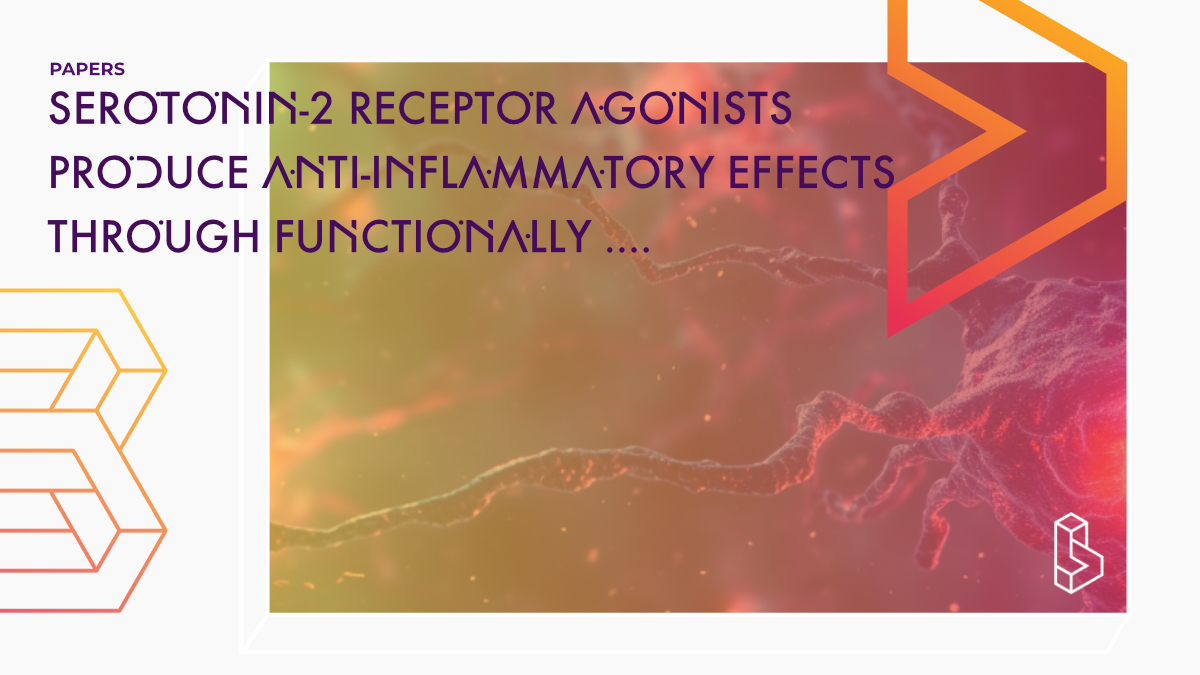This in vitro study examines functional selectivity between two 5-HT2A receptor agonists, (R)-2,5-dimethoxy-4-iodoamphetamine [(R)-DOI] and (R)-2,5-dimethoxy-4-trifluoromethylamphetamine [(R)-DOTFM], in the context of their impact on inflammation and airway hyperresponsiveness (AHR) in a mice asthma model. Despite similar in vitro activity and behavioural potency, (R)-DOTFM does not prevent inflammation or elevated AHR, in contrast to (R)-DOI, suggesting distinct anti-inflammatory mechanisms associated with certain psychedelics.
Abstract of Serotonin-2 Receptor Agonists Produce Anti-inflammatory Effects through Functionally Selective Mechanisms That Involve the Suppression of Disease-Induced Arginase 1 Expression
“Functional selectivity in the context of serotonin 2A (5-HT2A) receptor agonists is often described as differences psychedelic compounds have in the activation of Gq vs β-arrestin signaling in the brain and how that may relate to inducing psychoactive and hallucinatory properties with respect to each other. However, the presence of 5-HT2A receptors throughout the body in several cell types, including endothelial, endocrine, and immune-related tissues, suggests that functional selectivity may exist in the periphery as well. Here, we examine functional selectivity between two 5-HT2A receptor agonists of the phenylalkylamine class: (R)-2,5-dimethoxy-4-iodoamphetamine [(R)-DOI] and (R)-2,5-dimethoxy-4-trifluoromethylamphetamine [(R)-DOTFM]. Despite comparable in vitro activity at the 5-HT2A receptor as well as similar behavioral potency, (R)-DOTFM does not exhibit an ability to prevent inflammation or elevated airway hyperresponsiveness (AHR) in an acute murine ovalbumin-induced asthma model as does (R)-DOI. Furthermore, there are distinct differences between protein expression and inflammatory-related gene expression in pulmonary tissues between the two compounds. Using (R)-DOI and (R)-DOTFM as tools, we further elucidated the anti-inflammatory mechanisms underlying the powerful anti-inflammatory effects of certain psychedelics and identified key mechanistic components of the anti-inflammatory effects of psychedelics, including suppression of arginase 1 expression.”
Authors: Thomas W. Flanagan, Timothy P. Foster, Thomas E. Galbato, Pek Yee Lum, Brent Louie, Gavin Song, Adam L. Halberstadt, Gerald B. Billac & Charles D. Nichols
Summary of Serotonin-2 Receptor Agonists Produce Anti-inflammatory Effects through Functionally Selective Mechanisms That Involve the Suppression of Disease-Induced Arginase 1 Expression
Serotonin 5-HT2A receptor agonists have recently emerged as an exciting new target for therapeutic development in the treatment of neuropsychiatric disorders like depression and substance use disorder. The authors previously discovered that (R)-2,5-dimethoxy-4-iodoamphetamine has potent anti-inflammatory activity in vitro and across several rodent inflammatory systems through 5-HT2A receptor activation. Psychedelics prevent inflammation and allergic asthma phenotypes differently from serotonin, which is known to be pro-inflammatory and increase AHR through the activation of 5-HT2A receptors.
Here, they sought to elucidate further mechanisms underlying the anti-inflammatory effects of 5-HT2A receptor activation by certain psychedelics by capitalizing on the functionally selective properties of two specific ligands. They demonstrated that (R)-DOI, but not (R)-DOTFM, has a different proteomic response in the lung than (R)-DOI, suggesting that this difference is important.
Results and discussion
Find this paper
https://doi.org/10.1021/acsptsci.3c00297
Open Access | Google Scholar | Backup | 🕊
Cite this paper (APA)
Flanagan, T. W., Foster, T. P., Galbato, T. E., Lum, P. Y., Louie, B., Song, G., ... & Nichols, C. D. (2024). Serotonin-2 Receptor Agonists Produce Anti-inflammatory Effects through Functionally Selective Mechanisms That Involve the Suppression of Disease-Induced Arginase 1 Expression. ACS Pharmacology & Translational Science.

